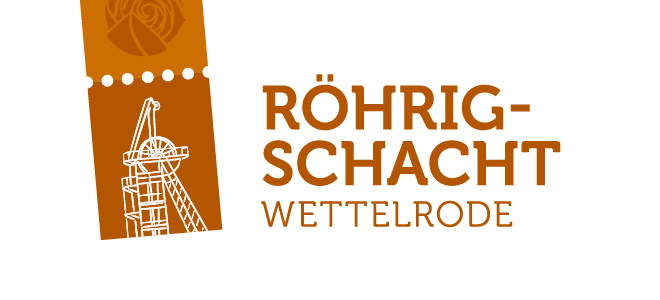Would you like to combine roses with insect-friendly perennials? Then we have some advice for you:
- The perennials used should have similar soil requirements to roses; as these tend to stand "fat", you should keep a distance with e.g. lavender or sedum, and possibly also lean the soil with coarse sand or gravel to make it more permeable. Also bear in mind that in well-fertilised, loamy soils, perennials will grow taller than the average indicated.
- You should avoid planting rampant, strong stolons and displacing perennials in close proximity to roses.
- Pay attention to the "vigour" of the rose: Weak-growing roses should not be combined with perennials with strong root formation.
- For vigorous-growing large shrub roses (e.g. spring series by Kordes), sprawling perennials are also possible (e.g. Lysimachia clethroides).
- Keep enough distance in the planting so that soil cultivation around the rose is still possible. For example, plant bulbous plants in such a way that you can still reach the rose when pruning it.
- Shrubs should not overgrow the rose; the foliage must be able to dry off.
An increasingly important aspect of side plantings is also insect-friendliness:
- There is currently a lot of talk about insect mortality. According to NABU 1/2016, the biomass of flying insects in NRW alone has declined by up to 80 percent in the last 15 years. We should counteract this as best we can in our private gardens. According to NABU, the area of all private gardens in Germany together is roughly equivalent to the area of all protected areas.
- Most roses are pure pollen plants, they do not provide nectar.
- But bees have to fill up on "aviation fuel" (nectar) first thing in the morning before they go out to collect pollen.
- 30 percent of pollination activity is carried out by honey bees (Apis melifera), the rest by wild bees, bumble bees and other insects.
- With Christmas roses (Helleborus niger and foetidus) the season for bumblebees begins. These fly as early as 6 °C, in February. Helleborus foetidus has the nectar yeast Metschnikowia reukaufii, through the fermentation of the nectar, the temperature in the flower is 6 °C higher than in the surrounding area and the calyx serves as a "warming room" for the bumblebees, who also accept that the nectar is somewhat less sugary.
Here is a small selection of good companion plants for roses, mainly with regard to insects:
- Thymus serpyllum: The corolla tubes are only about 2.5 - 4 mm long and therefore easily accessible to short-nosed insects and also several wild bees.
- Geranium sanguineum: native species, broad-bushy growing, not very demanding and important summer nectar and pollen donor also for hoverflies.
- Euphorbia myrsinites: low-growing, wintergreen, phototoxic milky sap. Forage plant for the spurge hawkmoth, whose caterpillar indicates its toxicity to predators by its colourful colouring.
- Digitalis purpurea: Native wild perennial, 2-year-old, poisonous. The caterpillars of the red-fingered flower moth live exclusively on Digitalis purpurea. When one flower is eaten, they move on to the next. Scientists have found out that the eaten flower sends out chemical "calls for help", by which an ichneumon wasp recognises in which flower a caterpillar lives in which one can lay an egg.
- Scabiosa columbaria: Native wild perennial, reproduces. Six-spotted woaders "fly" for the combination of violet-blue colour and scent of scabiosa. .
- Knautia macedonica: native wild perennial, germinates. The Knautia sand bee lives exclusively on Knautia and Scabiosa.
- Lychnis coronaria: short-lived species, but seeds abundantly. The females of the great woolly bee scrape off the plant hairs, also of mullein and woolly zest, form balls from them and embed their brood in them.
- Linaria purpurea: perennial bloomer, velveting abundantly The toadflax flower moth, a moth, lays its eggs exclusively on toadflax.
- Centrantus ruber: important food plant for the pigeon tail. Its caterpillars feed on Galium species, including the burdock ragwort Galium aparine. Also good for butterflies, which cannot pick up pollen with their thin proboscis. In the tubular individual flowers, the stamens are so close together that the butterflies can push the pollen downwards with their proboscis and then slurp up "soup with pickles". Pollen is very nutritious, in 100 grams of pollen there is as much protein as in 7 eggs or 500 grams of beef.
- Akelei: actually a pure flower for long-trunked bumblebees. Short-nosed bumblebees bite the flower spur and thus get to the nectar. Other short-tusked insects then also reach the nectar via these "break-in points".
- Campanula: poscharskyana and portenschlagiana as cushion perennials, C. persicifolia, C. ranunculoides and C. punctata as medium-high perennials and
C. lactiflora and C. latifolia as tall companion perennials. Bellflowers are very important for oligolectic (feeding on one plant species) wild bees living on them; e.g. the scissor bee Chelostoma rapunculi feeds itself and its brood exclusively on nectar and pollen of bellflowers. Wild bees also spend the night in the flowers and hide underneath when it rains. - Armeria maritima: evergreen, no runners, long-lasting nectar source.
- Helianthemum hybrids: evergreen, nectarless pollen flower, the caterpillars of the sunflower blue live on the leaves.
- Catmint: remontages after pruning, keep some distance, sows. Walahfrid Strabo (around 840 abbot of the Reichenau monastery in Lake Constance) recommended rose oil mixed with catnip for wound treatment.
Text: Gabriele Szopa and Kevin Mölzner






